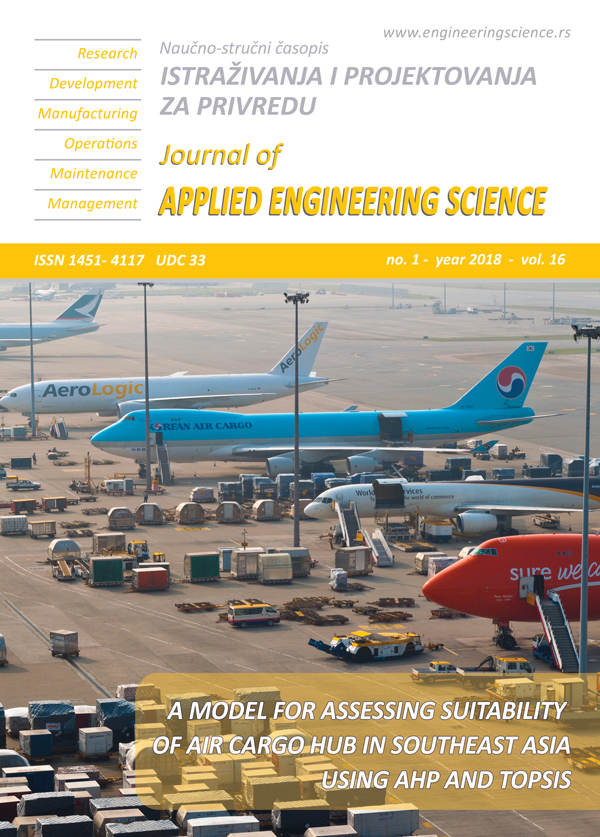MATHEMATICAL MODELING OF VIBROBURNISHING OF THE HOLE OF CYLINDER
Abstract
The authors obtained dependencies of the surface layer properties after machinig cylinder holes by vibroburnishing. The properties of the surface layer are changed from a variety of vibroburnishing factors. Surface layer quality graphics of the machining parameters are obtained by mathematical modeling using formulas derived empirically.
During the processing of experimental data, the authors of the articles identified optimal processing regimes in which parameters of the quality of the surface layer of the billet can be specified. Thus, vibroburnishing is better to make machining on the mode: m = 16,5 mm, i = 1,7 mm, α = 7,5 °, Ay = 160 J, ƒ = 20 Hz.
It was found that the greater vibroburnishing tightness is, the greater the value of size of the cold-hardening layer is. Rougher surface will always have bigger tightness of burnishing, i.e. the purer surface is, the lower the value of tightness of a vibroburnishing must be. However, in the process of a vibrational burnishing of holes there is a so-called critical point, roughness of a surface decreases and the surface layer of metal is strengthened before reaching this point, and after reaching it there is a phenomenon of a re-cold-hardening and quality of a surface decreases.
